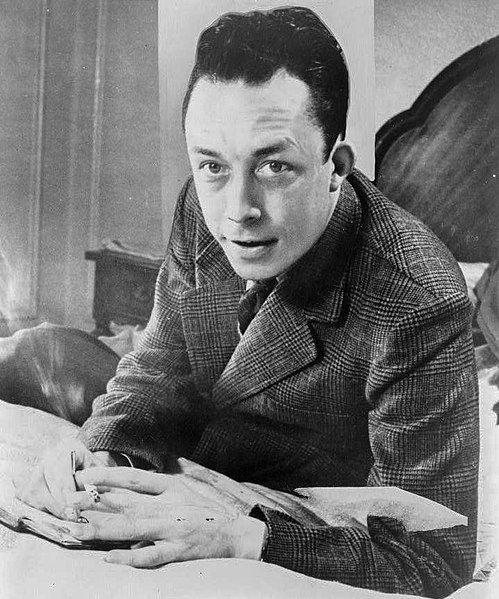The Myth of Sisyphus is a 1942 philosophical essay by Albert Camus. Influenced by philosophers such as Søren Kierkegaard, Arthur Schopenhauer, and Friedrich Nietzsche, Camus introduces his philosophy of the absurd. The absurd lies in the juxtaposition between the fundamental human need to attribute meaning to life and the "unreasonable silence" of the universe in response. Camus claims that the realization of the absurd does not justify suicide, and instead requires "revolt". He then outlines several approaches to the absurd life. In the final chapter, Camus compares the absurdity of man's life with the situation of Sisyphus, a figure of Greek mythology who was condemned to repeat forever the same meaningless task of pushing a boulder up a mountain, only to see it roll down again just as it nears the top. The essay concludes, "The struggle itself towards the heights is enough to fill a man's heart. One must imagine Sisyphus happy."
Cover of the first edition
Sisyphus by Titian, 1549
Albert Camus was a French philosopher, author, dramatist, journalist, world federalist, and political activist. He was the recipient of the 1957 Nobel Prize in Literature at the age of 44, the second-youngest recipient in history. His works include The Stranger, The Plague, The Myth of Sisyphus, The Fall and The Rebel.
Portrait from New York World-Telegram and Sun Photograph Collection, 1957
A 20th-century postcard of the University of Algiers
Albert Camus's gravestone
The bronze plaque on the monument to Camus in the town of Villeblevin, France. Translated from French, it reads: "From the General Council of the Yonne Department, in homage to the writer Albert Camus whose remains lay in vigil at the Villeblevin town hall on the night of 4 to 5 January 1960"






